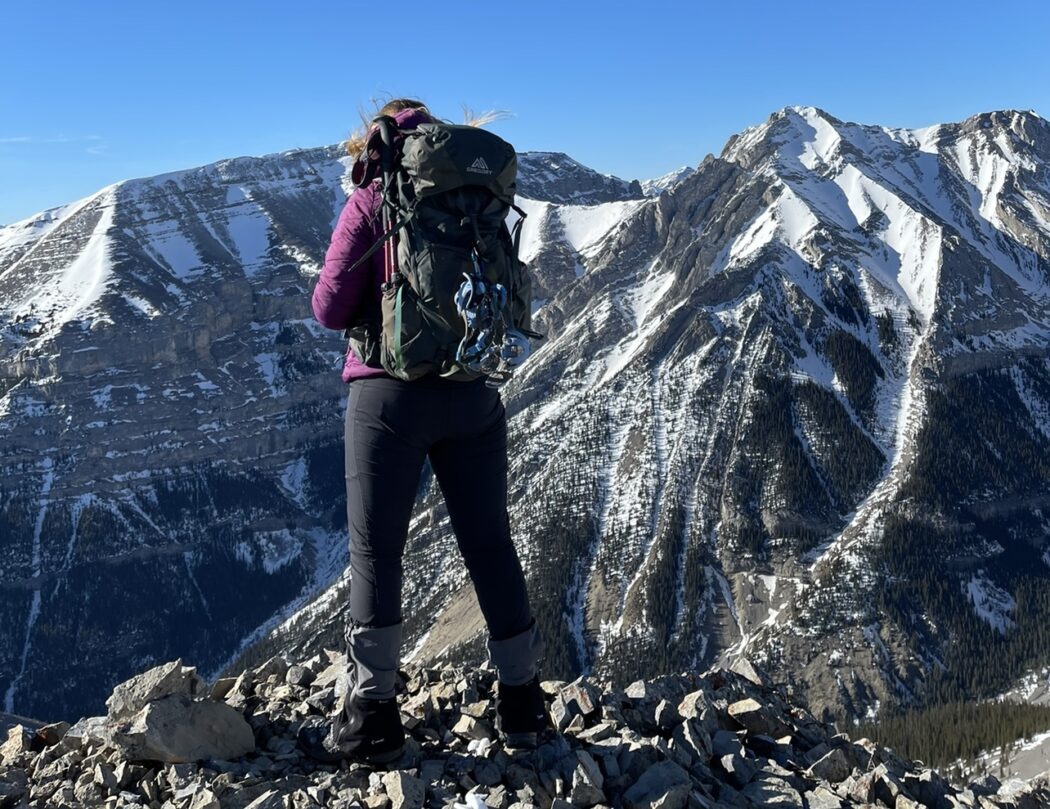Hiking pants are specially designed to be lightweight, flexible, and durable. They come in a variety of styles for you to find exactly what you’re looking for if you’re in need of some new bottoms of your hiking conquests.
However, hiking pants aren’t overly necessary when you’re considering purchasing gear or attire for hiking.
Read more below to find out why hiking pants were created and if they might be something you want to invest in.
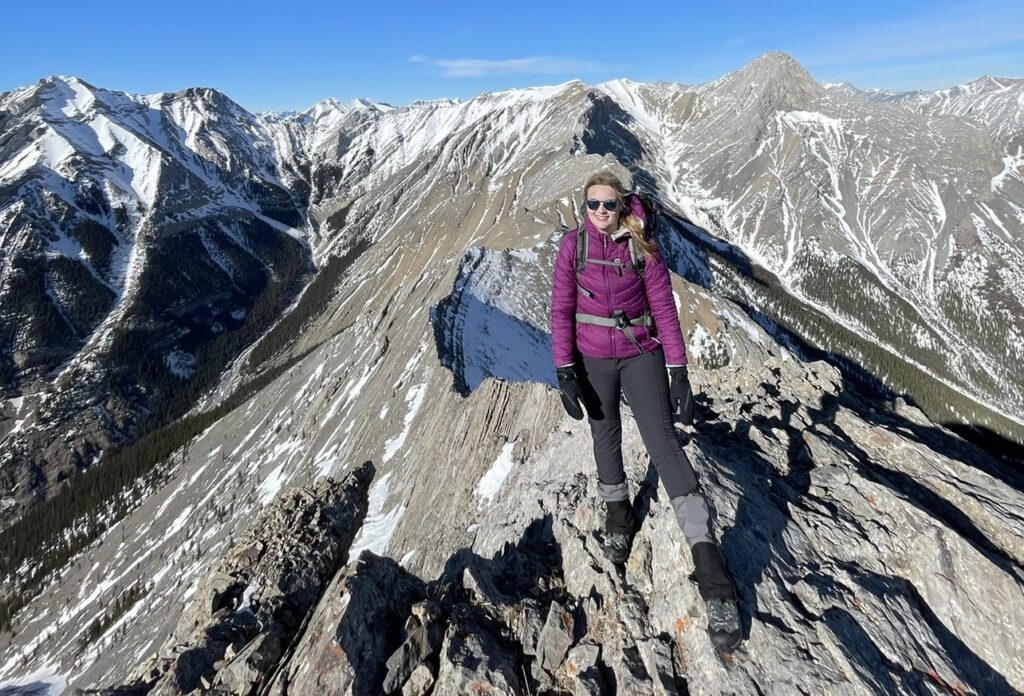
What Is Special About Hiking Pants and What Is Their Purpose?
Hiking pants are intended to be everything you need in a pant while hiking. No matter what problem you come across while hiking, there should be a hiking pant that is just right for you.
Lightweight
Compared to jeans, for instance, hiking pants are surprisingly lightweight. (See what >800 other hikers think about hiking in jeans here!)
When you’re hiking, every small amount of weight makes a difference since you’ll be carrying that weight over distance and elevation.
Hiking pants are considerably lightweight, saving your hip flexors from picking up heavy pants with every step.
Additionally, in the summer, lightweight pants help prevent you from overheating and sweating excessively. In the winter, hiking pants give you the protection you need without adding too much bulk.
Hiking pants are a great innovation to keep the weight you’re carrying as low as possible.
Durable
Sometimes, while hiking, you come across some considerably rugged terrain. Sharp rocks and tree branches can tear at your clothing and skin, sometimes causing scratches and even wrecking expensive articles of clothing.
Hiking pants, though lightweight, are designed with a tough outer material to withstand the terrain you might encounter while trekking though the backcountry.
Most hiking pants are designed to be water-resistant as well, to help stand up to the elements. When you’re hiking, even when the weather looks clear, it can change rapidly. Hiking pants have you prepared for all weather conditions without having to pack a separate pair of rain pants.

Flexible
Not all pants are made equally. Another benefit of wearing hiking pants is that they are made with stretchy materials such as a nylon blend to provide stretch in multiple directions.
When you’re hiking, your legs need the freedom to take large steps or leap over logs or to sit down on a rock to take a break. There’s no telling what you will need to do, but it’s important that you have the freedom and mobility to do so.
Hiking pants are usually meant to fit a bit loose which makes them comfortable in addition to the nylon-blend. A little bit of a loose-fit also helps to add freedom of movement into the pant.
Material
Hiking pants should be made out of a blend of materials, likely polyester and nylon.
Polyester helps to absorb sweat, while nylon helps to provide stretch to your pants. These two factors become very important while you’re out hiking, as they will help to keep you as comfortable as possible out in the backcountry.
What Are Hiking Pants Called?
Hiking pants are most-often simply called “hiking pants” or “trekking pants” if they are pants that you use for hiking. There is no fancy name for hiking pants.
However, some people might refer to their hiking pants as “soft shells”, due to the nature of the pants giving both durability and protection from the elements.
There is a bit of ambiguity in the terminology of hiking apparel, and as such official definitions of items don’t really exist. However, if you have a pair of pants that you only wear while hiking, you can safely call them “hiking pants”, regardless of what they are made of.
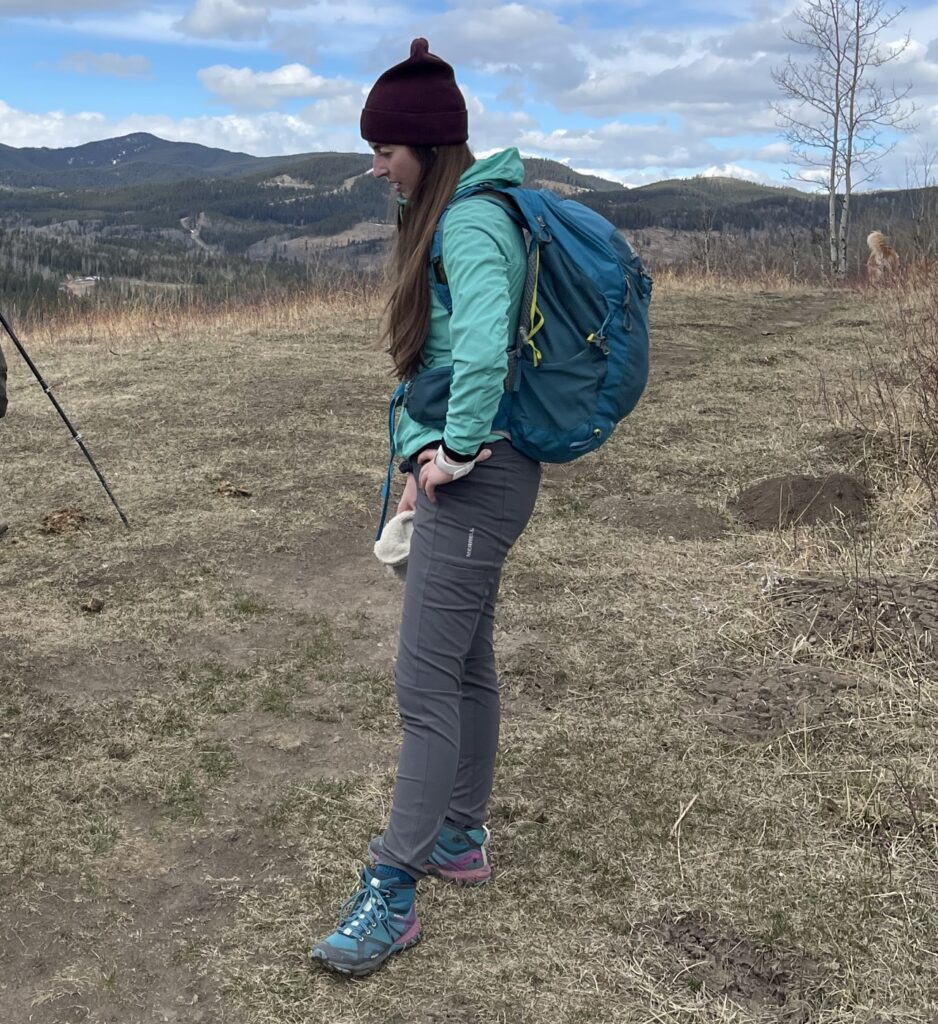
How To Choose Hiking Pants
Think about the environment and terrain you’re going to hike in. Will it be warm? Flat? Steep? Rocky? Knowing the intended use for your apparel will help you determine what you need out of your clothing.
Comfort (Fit)
The most important function of a hiking pant is that they are comfortable.
If you’re not comfortable in your clothing while you’re hiking, you’re not going to have an enjoyable experience, regardless of any other factors. Think about your favorite pair of pants. How do they fit? What do you like about them?
Hiking pants should fit comfortably around your waist or hips – wherever you prefer to wear your pants. They shouldn’t get tight or pinch when you bend over. If you lift your legs up and bend your knees, there should be no restriction of your movement.
A good fitting pair of hiking pants should be very comfortable. You should feel as though you could lounge around in them (or spend all day walking in them, more accurately.)
Thickness
The thickness of the hiking pants you choose to wear will be determined by the conditions you plan on hiking in. If you plan on hiking in the heat of the summer, you might want to choose a lighter pair of pants. If you plan on hiking in the winter, a thicker pair might be more ideal.
If conditions are mild year-round, or you don’t plan on hiking in the cold but want one pair of pants that is more versatile, consider wearing a base layer (LINK) underneath your hiking pants to help you stay warm when the weather is less than ideal.
I own both a light pair of hiking pants and a thick pair of hiking pants for varying conditions. However, I don’t wear the lighter pair of pants as often because I quite enjoy hiking in leggings or shorts. My heavier pair I rely on heavily in winter conditions.
Check out my article here for more information about winter hiking pants!

Cut
The cut of the hiking pants might be important due to personal preference and also the requirements of your journey.
Some people don’t like the feel or look of their pants getting tighter around the lower half of their leg. In this instance, maybe a straight-leg or boot cut hiking pant is what you should look for, while the opposite might be true for other people.
If you’re planning on doing any scrambling or climbing in your hiking pants, a tighter cuff, like a jogger, might be ideal so that your pants don’t get caught under the foot of your other leg.
Whatever your preference is, keep in mind what you like in other pants and what you will be doing while hiking as you shop around for different pants.
Coating
A great hiking pant should be water-resistant at the very least. You never know when the weather will change, and being caught in a rainstorm can leave you both wet and cold.
If your hiking pants are water-resistant, it gives you a chance to get out of the rain or hunker down under some shelter while you wait for better weather. Or if you’re feeling adventurous and don’t mind a bit of rain, water-resistant coating gives you some time before your pants become soaked though.
In snowy conditions, water-resistant or waterproof coatings become very important as the wet clothing will make you cold quickly. If you take a break in the snow or slip and fall, it becomes vital to stay dry.
If you’re concerned that a water-resistant coating will cause you to retain extra heat, look for pants with good ventilation or zippers that you can undo to let air in and the heat out.
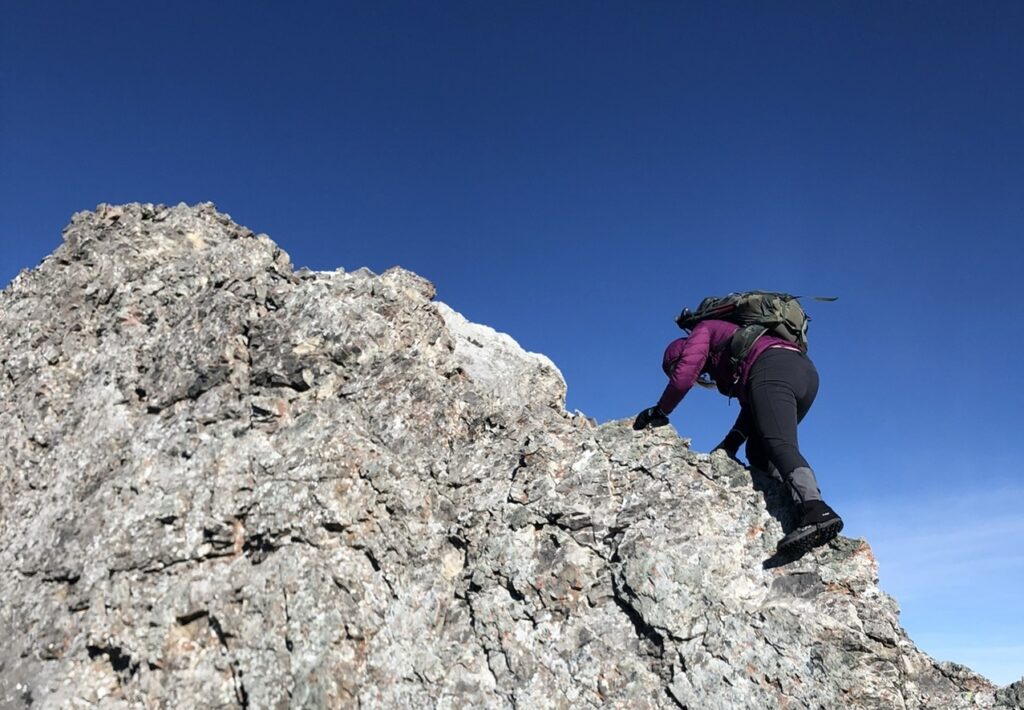
What To Avoid When Choosing Hiking Pants
When choosing hiking pants, think about the things you don’t like in other pants that you own. If those attributes exist in your hiking pants, you’re unlikely to wear them and feel good while hiking.
Uncomfortable
If your hiking pants are uncomfortable, you won’t feel good wearing them. If you’re constantly thinking about how uncomfortable you feel, you’re not going to enjoy your hike.
Hiking pants can be uncomfortable for a number of reasons. If you’re finding that’s your experience, try shopping around for a different pair, or even trying on some comfortable pants that you already own at home.
Unattractive
While it’s not the most important factor when considering hiking pants, if you don’t like the way you look, you probably won’t enjoy spending time in your hiking pants.
Hiking “for the ‘gram” might not be something we like to admit to, but there is something to be said about the motivating factor of a great photo. If you hike to a beautiful spot but don’t want any photos since your pants are unflattering, it could ruin the moment.
So many different styles of pants exist. If you’re not happy with the hiking pants you’ve chosen, keep looking. There will be something that feels just right for you.
Poor Fit
To add to the note of pants being uncomfortable, a poor fit in your hiking pants will likely make for a bad hiking experience.
If your pants are too loose and are always falling down, it will become annoying quickly as you have to hold them up with every step.
If you walk with your legs close together and your pant legs have extra fabric that swish-swishes with every stride, you’ll be adding friction into your step which will make the hike harder.
If the hiking pants are too small or too tight anywhere, it’s going to make the hike uncomfortable and possibly difficult with each step.
A poor fit in your hiking pants will not make for a very enjoyable experience.
Expensive
Maybe you have money to spend on your activities and you don’t mind splurging on a nice pair of hiking pants.
However, for me, one of the best things about hiking is that you don’t necessarily need any special equipment. If you don’t have the funds to spend on a fancy pair of hiking pants, raid your closet and wear whatever feels the most comfortable for you.
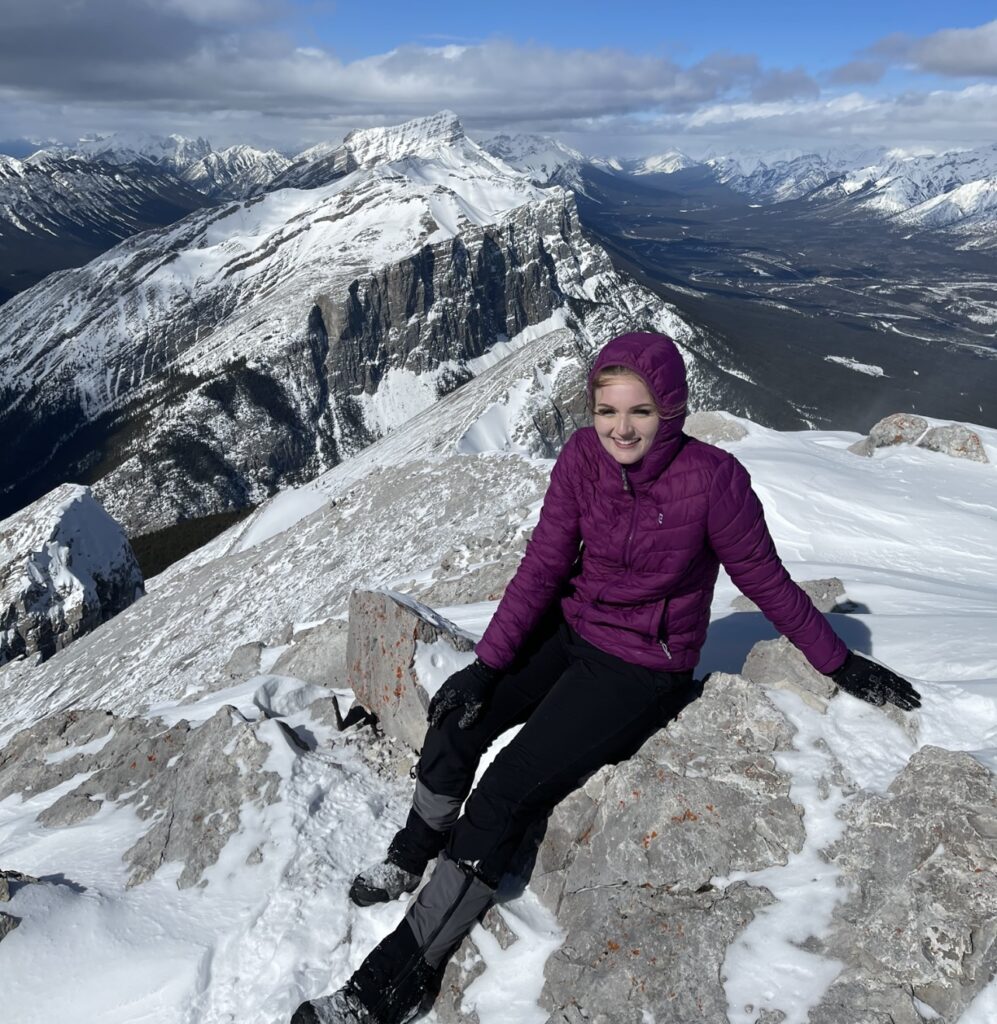
Hiking Pants vs Regular Pants
Hiking pants that are labeled and sold as “hiking pants” will likely be lighter, more durable, and more water-resistant than regular pants. However, it depends which pants you are comparing hiking pants to.
A pair of leggings, for instance, might be equally as light as hiking pants. Jeans might be more durable than hiking pants. The wonderful thing about hiking pants is that they aim to find that sweet spot of all the qualities you look for in pants without compromising on style or quality.
However, it should be noted that you can hike in almost any pants. As such, whatever pants you’re hiking in can be your “hiking pants”. I personally love hiking in leggings as I find them the most comfortable and easy to style pants I own.
Alternatives to Wearing Hiking Pants
The best thing about hiking is that you don’t really need any specific gear to get out on the trails and start moving!
If you’re looking for alternatives to hiking pants, raid your closet and wear the most comfortable pair of pants you own. Maybe that pair of pants is jeans, sweatpants, joggers, or leggings. Any pair of pants you find comfortable will work just fine on a hike!
If you’re worried about damaging your clothing, try to purchase a replica of the pants you love just for the trail.
Another concern is that regular pants often aren’t waterproof. You can wear whatever pants you choose on a hike, and pack a pair of rain pants in your backpack for emergencies. Rain pants are often lightweight and can easily slip on over a pair of pants.
In the winter, you can wear a hard shell over top of any pants you choose (though I would definitely recommend wearing a base layer under regular pants to help keep warm). This hard shell will provide some protection from the elements as well as some durability.

What Color Hiking Pants Should I Wear?
The color of hiking pants you should wear depends mainly on your style. If you like wearing brightly colored clothing, I would recommend going for neutral-colored hiking pants, such as grey or black, which will allow you to wear brightly colored socks on top of your hiking pants, and brightly colored tops.
If you prefer to wear neutral or dark colors, I would recommend looking for hiking pants in colored tones that are more neutral or muted, such as dark blue, or forest green. This will allow you to wear neutral tops, like black or gray, without wearing an entire outfit of the same color.
If you love color, go bold! There’s no one stopping you from wearing whatever colors you love, even if your entire outfit is a variety of clashing colors. Sometimes brightly colored clothing stands out the best against landscape backgrounds. You will be easy to spot on the trail too, which can also be a good thing.
Sometimes you can also match your pants to your top, and it can look very athletic. For example, brightly colored leggings and sports bras look like you were planning for an outing of exercise.
If your hiking pants are comfortable and fit well, any color that you choose will be just fine out in the backcountry.
Questions?
Do you wear hiking pants on your adventures? What do you prefer to hike in? Or, if there’s something I didn’t answer for you, drop a comment below and I’ll get back to you!
Happy trails!

